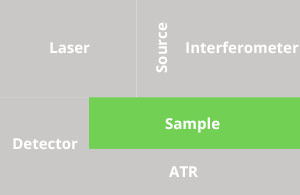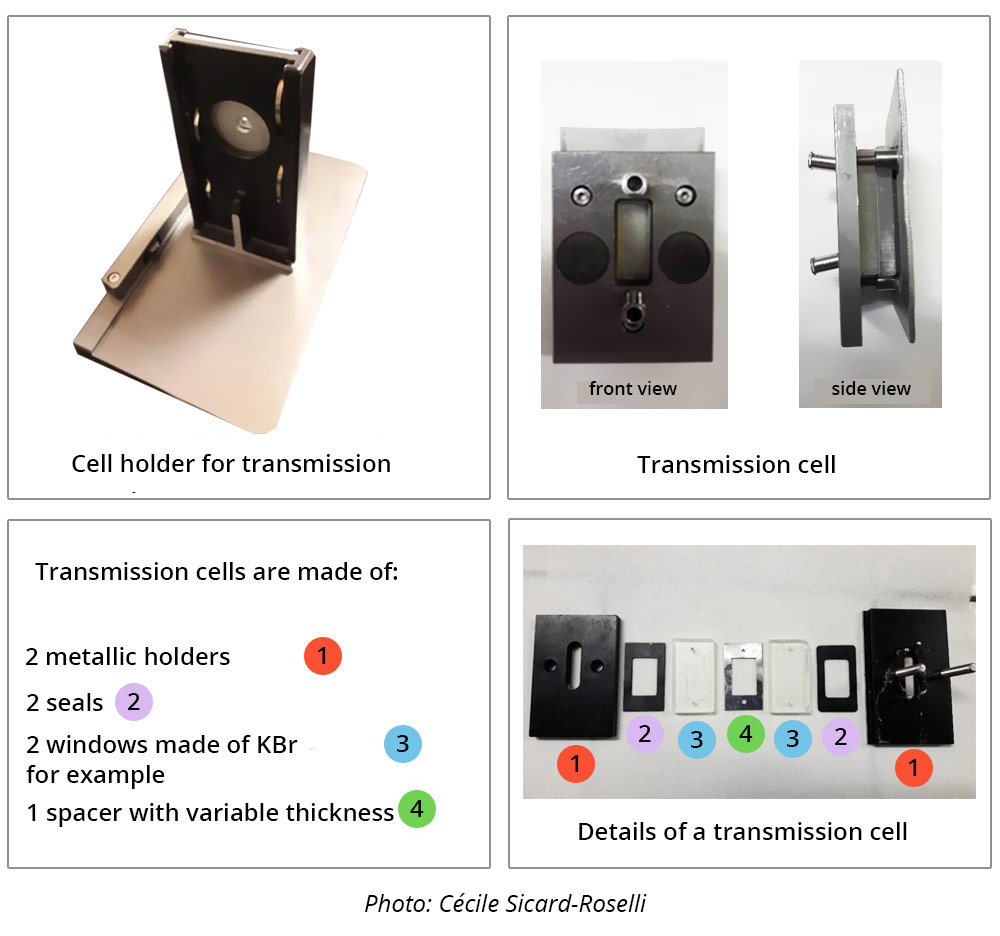Sample
Any kind of sample can be analyzed by IR.
Solids can be analyzed pure or included in a matrix which is transparent in IR such as alkali halides (KBr for example). The required amount is about 1 to 2 mg.
Liquids can also be analyzed pure or diluted in a solvent. therefore their contribution can be troublesome in the interpretation of the spectrum. To record a spectrum, the required sample volume is also small, about 1 to 2µL.
The same goes for gas which can be analyzed pure or in a mixture.
All these types of samples can be analyzed by transmission, in the form of a crushed pellet for solids or in KBr cells, for example, for liquids and gases. As gases are usually not very concentrated, the optical path length can range from 10 cm to several meters by successive reflections, while liquid cells have an optical path length shorter than 1 mm.
There are also reflection methods for liquids and solids, such as ATR (attenuated total reflectance), diffuse reflection or specular reflection.
ATR is the most common and, as with transmission, allows for quantitative analyses.






